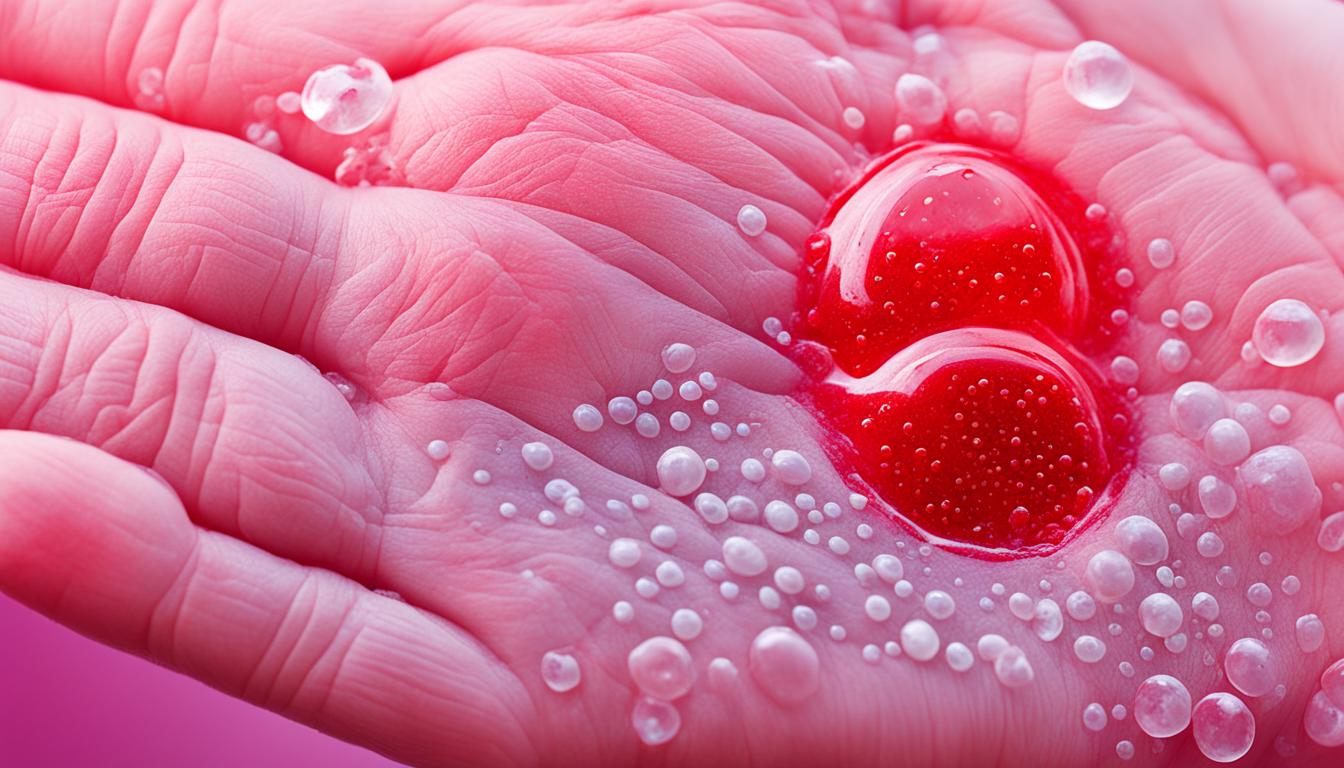Contact dermatitis is a skin condition many face. It comes from irritants or allergens, causing discomfort and swelling. This disease has three main types: allergic contact, irritant contact, and photoallergic contact.
The signs of contact dermatitis vary but usually include peeling, dry patches, redness, and swelling. These can make life tough because of the discomfort they cause.
It happens when the skin meets substances like nickel, rubber, or chemicals. Allergic contact dermatitis comes from an allergic reaction. For example, jewelry with nickel or scents with allergenic chemicals can cause this type.
On the other hand, irritant contact dermatitis results from skin contact with nasty substances. This includes acids, detergents, or kerosene.
Diagnosing this condition involves a thorough check-up. A dermatologist will look at your symptoms and check your history. They often do patch testing to find out what’s causing the irritation.
Key Takeaways:
- Contact dermatitis affects many due to irritants or allergens.
- It has three types: allergic contact, irritant contact, and photoallergic contact dermatitis.
- Symptoms include peeling, redness, and swelling.
- Causes can be substances such as nickel, or sunlight exposure.
- Diagnosis requires a medical evaluation and patch testing.
Causes and Symptoms of Allergic Contact Dermatitis
Allergic contact dermatitis is caused by an allergic reaction. It happens when the skin touches a foreign substance. These substances can include everyday product chemicals.
Nickel, often found in jewelry, is a big cause. It can trigger a reaction in some people. This leads to redness, rash, and swelling where the metal touches the skin.
Rubber gloves used in jobs like healthcare may lead to skin issues. They contain substances that some people are allergic to. This could make their skin dry or develop blisters. It might also make them itchy.
Many beauty products and personal care items can also cause this condition. Their fragrances and preservatives can irritate the skin. Symptoms include redness, burning, swelling, and peeling.
Working with certain chemicals can be another trigger. These chemicals are found in solvents, dyes, and cleansers. They can lead to skin issues like itching, rash, or dryness.
Common Symptoms of Allergic Contact Dermatitis
- Redness
- Itching
- Rash
- Swelling
- Burning sensation
- Peeling or flaking skin
- Blisters
If you show these symptoms after contact with certain items, see a dermatologist. They can help diagnose and treat your condition.
| Allergens | Common Causes |
|---|---|
| Jewelry | Nickel-containing metals |
| Rubber gloves | Allergenic substances in the gloves |
| Perfumes, cosmetics, skincare products | Allergenic chemicals in the products |
| Chemicals | Solvents, dyes, cleaning agents |
Causes and Symptoms of Irritant Contact Dermatitis
Irritant contact dermatitis happens when your skin meets harmful substances. It’s the most common kind of contact dermatitis.
Acids from batteries or certain chemicals often cause this skin problem. Detergents, drain cleaners, and kerosene are also big culprits.
You might notice various symptoms like blistering, dry skin, and swelling. Your skin can feel hard or tight if you have this condition. Plus, you may see ulcers or open sores form.
Causes of Irritant Contact Dermatitis
| Causes | Substances |
|---|---|
| Acids | Batteries, detergents, drain cleaners |
| Chemicals | Specific chemicals known to be irritants |
| Kerosene | Exposure to kerosene or similar substances |
Symptoms of Irritant Contact Dermatitis
- Blistering
- Dry skin
- Swelling
- Skin feeling hard or tight
- Formation of ulcers or open sores
Stem Cell Therapy for Contact Dermatitis
Stem cell therapy is a new and hopeful way to treat contact dermatitis. Mesenchymal stem cells (MSCs) are at the heart of this treatment. They work to ease the inflammation linked with this skin issue and they help the skin heal.
MSCs can become different types of cells, including those that fight skin problems. They don’t just reduce swelling. They also kickstart the repair of damaged skin. This is great news for those fighting contact dermatitis.
MSCs come from a few places, like bone marrow and umbilical cord blood. Studies have looked at how well they do in treating various skin problems, contact dermatitis included.
Yet, there is a lot more to learn. Scientists need to figure out how this therapy works best for contact dermatitis. Even though there’s still work to do, stem cell therapy already promises better care and life for people with skin problems.

